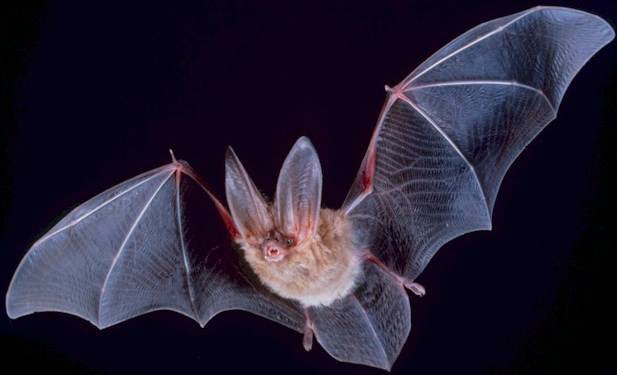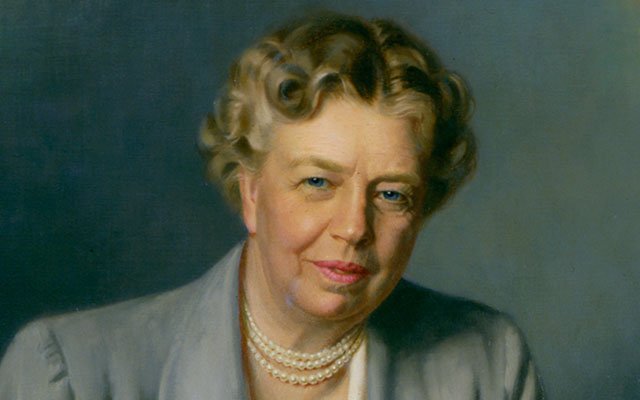TIL The US Tried to Employ "Bat Bombs" in World War II
This was just one of those weird facts you pick up from talking to weird people. Actually, I almost completely dismissed the story as a joke (or what the Trump administration might call an "alternative fact") as soon as I heard it; the whole thing just sounded completely ridiculous. I decided to check out what I was sure was just a fictional story online...and I'm so glad I'm did. Never did I believe a search of "bat bombs ww2" would turn up any credible information! (I linked a few of these sources at the bottom.)

The story begins on December 7, 1941. A Pennsylvania dentist named Lytle S. Adams is visiting Carlsbad Caverns (NM), a location known for great spelunking opportunities and a massive bat population roughly one million strong. Adams found himself particularly interested in the region's bats during his stay. Now you probably recognize the above date as being a particularly important date in US history. Adams had turned on his radio that morning to recieve the devastating news of the Japanese attack on Pearl Harbor. While the nation was in mourning, Adams began concocting a bizarre revenge plan against the Japanese.

It was less than a month later, on January 12, 1942, that Adams' plan was sent to the White House. He suggested the destruction of Japanese cities by outfitting bats with tiny incendiary bombs, which the bats would carry into the tiny nooks and crannies of the cities to be detonated (this is some James Bond villain-level scheming, here).
"Think of thousands of fires breaking out simultaneously over a circle of forty miles in diameter for every bomb dropped. Japan could have been devastated, yet with small loss of life." - Lytle S. Adams Source

Why bats? Well, there are four biological factors that Adams took into account when devising his plan. First, bats can be found in large numbers, with some caves easily hosting millions of bats. Second, bats can fly while carrying more than their own weight; females easily carry their young, sometimes twins, while flying. Third, bats hibernate and would not require food or maintenance during their dormant cycle. And fourth, bats fly around under the cover of darkness, finding secluded, hidden places to shelter in during daylight. Add to that the fact that much of Japan's infrastructure were susceptible to incendiary devices (many of the buildings were made of paper, bamboo, and other highly flammable material), Adams had complete confidence in his plan. Source

You would think that such a proposal wouldn't get very far. Perhaps it be opened by White House staff, laughing over the ridiculous scheme before being put in the recycling bin to be forgotten forever. Perhaps it would have been, except for the fact that Adams personally knew Eleanor Roosevelt (they actually met when Adams was presenting one of his previous schemes: an airmail system where cargo could be picked up without a plane having to land). Despite the radical eccentrics of his revenge plan, his connection to the Roosevelt's granted him a surprisingly high-level audience.

The plan was submitted to the National Research Defense Committee, the body that was responsible for researching ideas and proposals that were applicable to the war. The scheme reached Donald Griffin, a man who had previously conducted groundbreaking work of the sonar ability of bats who immediately supported the "Bat Bomb" plan.
"This proposal seems bizarre and visionary at first glance, but extensive experience with experimental biology convinces the writer that if executed competently it would have every chance of success." -Donald Griffin, April 1942, Source
With Griffin's support, the proposal was supported by members of the executive branch.
"This man is not a nut. It sounds like a perfectly wild idea but is worth looking into." -Presidential memorandum Source
The Mexican free-tailed bat (pictured below) was chosen to be the explosive vector. Adams captured a few of these bats himself and brought them back to Washington for a live demonstration of them carrying a dummy bomb. His presentation was successful, and the US Air Force gave the authority to begin the research in March 1943. Now known as "Project X-Ray", the purpose of the testing was to "determine the feasibility of using bats to carry small incendiary bombs into enemy targets". Source

Project X-Ray was transferred to the US Army, who began capturing thousands of bats by net in the southwest. Simultaneously, tiny incendiary bombs were constructed and strapped to the bats. Now, I realize this all sounds like bizarre science fiction so here is a picture of a Project X-Ray bat carrying its explosive device.

One of the biggest challenges was figuring out how to deploy the bats. It was determined that the bats were most easily shipped while in hibernation (for obvious reasons). To induce hibernation, the bats were put into ice cube trays and cooled (seriously, you cannot make this stuff up). The second part of their deployment was the real challenge: how do we release the bats in midair? The design chosen for their deployment was essentially a cardboard container that was designed to automatically open and release the bats over Japanese cities.

When you combine two unruly things (you know, like wild animals and fiery explosives), there will be issues to iron out. The deployment of the bats hit several snags during their testing. During one test in particular, a few of the bat bombs were accidentally released, resulting in a fire that destroyed a hanger and a general's car (again, actual photos below).

Project X-Ray was passed onto the Marine Corps in December, 1943. After over 30 demonstrations and a total of $2 million spent, the project was finally cancelled. While there is no definitive reason for the ending of the program, it is widely believed that the program was simply cast aside as the US put all its resources towards the Manhattan Project: the atomic bomb.

And what of Adams? Bat Bombs was far from his last scheme; directly following this project, he patented a method of bombing the prairies with seed packets to facilitate plant growth (and later tried to create a "fried chicken vending machine"). Clearly the end of Project X-Ray did nothing to hamper his creative spirit! Source
Photo Links: 1, 2, 3, 4, 5, 6, 7, 8, 9, 10
Sources: (I had to read through a lot to really confirm this was real!)
https://en.wikipedia.org/wiki/Bat_bomb
http://www.atlasobscura.com/articles/the-almost-perfect-world-war-ii-plot-to-bomb-japan-with-bats
http://www.historynet.com/top-secret-wwii-bat-and-bird-bomber-program.htm
http://www.smithsonianmag.com/smart-news/bats-balloon-bombs-world-war-ii-180956203/
Lol i bet they've tried all sorts of crazy stuff back then..
This is awesome! I can't wait to get to my WWII unit in class now. Thank you!
nice, appreciate pls this post https://steemit.com/story/@faurman/metal-detecting-as-a-hobby-world-war-2-finds